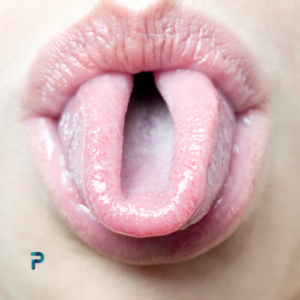
Breathwork, the practice of consciously controlling your breath, has been utilized for centuries in various cultures and spiritual traditions. It’s an accessible, natural tool for improving mental, emotional, and physical health.
This blog will explore different types of breathwork and their unique benefits, providing you with a comprehensive guide to incorporating breathwork into your wellness routine.
1. Diaphragmatic Breathing (Belly Breathing)

How to Do It:
- Sit or lie down in a comfortable position.
- Place one hand on your chest and the other on your abdomen.
- Inhale deeply through your nose, allowing your abdomen to rise while keeping your chest relatively still.
- Exhale slowly through your mouth, feeling your abdomen fall.
Benefits:
- Reduces Stress and Anxiety: Activates the parasympathetic nervous system, promoting relaxation and reducing the production of stress hormones.
- Improves Lung Function: Enhances lung capacity and efficiency by engaging the diaphragm.
- Aids Digestion: Massages internal organs, promoting better digestion and reducing bloating.
2. Box Breathing (Square Breathing)
How to Do It:
- Inhale through your nose for a count of four.
- Hold your breath for a count of four.
- Exhale through your mouth for a count of four.
- Hold your breath again for a count of four.
- Repeat the cycle.
Benefits:
- Enhances Focus and Concentration: Helps clear the mind, making it an excellent technique for improving mental clarity.
- Reduces Stress: Calms the nervous system and can be especially beneficial in high-stress situations.
- Improves Emotional Regulation: Helps manage feelings of anxiety and overwhelm by bringing awareness to the present moment.
3. Alternate Nostril Breathing (Nadi Shodhana)

How to Do It:
- Sit comfortably and close your right nostril with your right thumb.
- Inhale deeply through your left nostril.
- Close your left nostril with your right ring finger, then open and exhale through your right nostril.
- Inhale through your right nostril, close it, and then exhale through your left nostril.
- Continue alternating nostrils.
Benefits:
- Balances the Nervous System: Harmonizes the left and right hemispheres of the brain, promoting emotional stability.
- Enhances Respiratory Function: Improves lung capacity and efficiency.
- Increases Focus: Helps sharpen concentration and mental clarity.
4. 4-7-8 Breathing
How to Do It:
- Inhale quietly through your nose for a count of four.
- Hold your breath for a count of seven.
- Exhale completely through your mouth, making a whooshing sound, for a count of eight.
- Repeat the cycle three to four times.
Benefits:
- Induces Relaxation: Slows down the heart rate and calms the nervous system, making it ideal for managing stress and anxiety.
- Improves Sleep: Helps ease the mind into a restful state, aiding in falling asleep more quickly.
- Reduces Cravings: Can help manage impulses and cravings by bringing focus and calm to the mind.
5. Wim Hof Method

How to Do It:
- Sit comfortably and take 30 deep breaths, inhaling through the nose and exhaling through the mouth.
- After the last exhale, hold your breath as long as you can.
- When you feel the urge to breathe, inhale deeply and hold for 15 seconds, then exhale.
- Repeat the cycle three times.
Benefits:
- Boosts Immunity: Can enhance the immune response and increase overall resilience.
- Increases Energy Levels: Boosts oxygen levels in the body, leading to higher energy and alertness.
- Improves Mental Clarity: Enhances focus and concentration, providing a sense of mental clarity.
6. Holotropic Breathwork
How to Do It:
- Usually done in a facilitated group setting.
- Lie down and begin deep, fast-paced breathing.
- Continue for an extended period, often 2-3 hours, accompanied by evocative music.
- Process the experience through discussion or creative expression afterward.
Benefits:
- Emotional Healing: Facilitates the release of repressed emotions and trauma.
- Enhances Self-Awareness: Promotes deep insights and self-discovery.
- Increases Creativity: Can unlock creative potential and new perspectives.
7. Kapalabhati (Skull Shining Breath)

How to Do It:
- Sit comfortably with your spine straight.
- Take a deep breath in.
- Exhale forcefully through the nose, contracting your abdominal muscles.
- Allow passive inhalation to follow.
- Continue the process for 1-2 minutes.
Benefits:
- Detoxifies the Body: Clears the respiratory system and promotes the removal of toxins.
- Boosts Energy: Increases oxygen supply to the brain, enhancing alertness and vitality.
- Improves Digestion: Stimulates abdominal organs, aiding in digestion and metabolism.
8. Buteyko Breathing
How to Do It:
- Sit comfortably and breathe normally.
- Pinch your nose and hold your breath until you feel a mild air hunger.
- Resume normal breathing and focus on reducing the volume of each breath.
- Practice shallow, gentle breathing through the nose.
Benefits:
- Improves Respiratory Function: Helps manage asthma and other respiratory conditions.
- Enhances Sleep Quality: Reduces snoring and sleep apnea symptoms.
- Increases Physical Performance: Optimizes oxygen utilization in the body, improving endurance and recovery.
9. Sitali Breath

How to Do It:
- Sit comfortably and close your eyes.
- Roll your tongue into a tube and stick it out slightly.
- Inhale deeply through the rolled tongue.
- Exhale through your nose.
- Continue for 2-3 minutes.
Benefits:
- Cools the Body: Lowers body temperature, making it ideal for hot weather or heated environments.
- Reduces Anxiety: Induces a calming effect on the mind and body.
- Improves Digestion: Helps reduce acid reflux and indigestion.
10. Rebirthing Breathwork
How to Do It:
- Lie down comfortably and start deep, connected breathing, focusing on a continuous inhale-exhale cycle without pauses.
- Continue for 1-2 hours, often with the guidance of a trained facilitator.
- Process the experience through discussion afterward.
Benefits:
- Emotional Release: Facilitates the release of deep-seated emotions and traumas.
- Enhances Self-Awareness: Promotes profound insights and personal growth.
- Increases Energy Levels: Enhances overall vitality and well-being.
- Breathwork, the practice of consciously controlling your breath, has been utilized for centuries in various cultures and spiritual traditions. It's an accessible, natural tool for improving mental, emotional, and physical health.
Breathwork is a versatile and powerful tool for enhancing mental, emotional, and physical health. Whether you are looking to reduce stress, improve sleep, increase energy levels, or foster emotional healing, there is a breathwork technique that can meet your needs.
By incorporating these practices into your daily routine, you can unlock a deeper connection with yourself and experience the transformative power of conscious breathing.


